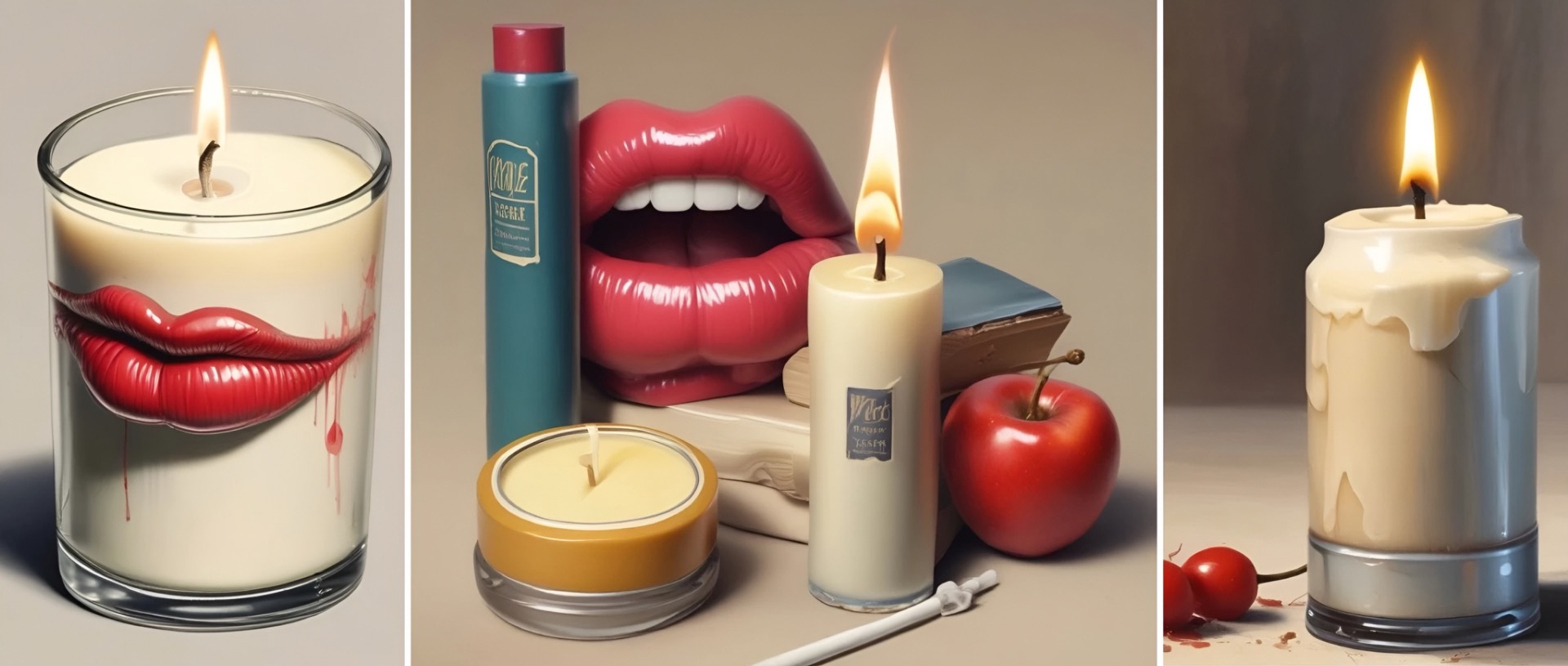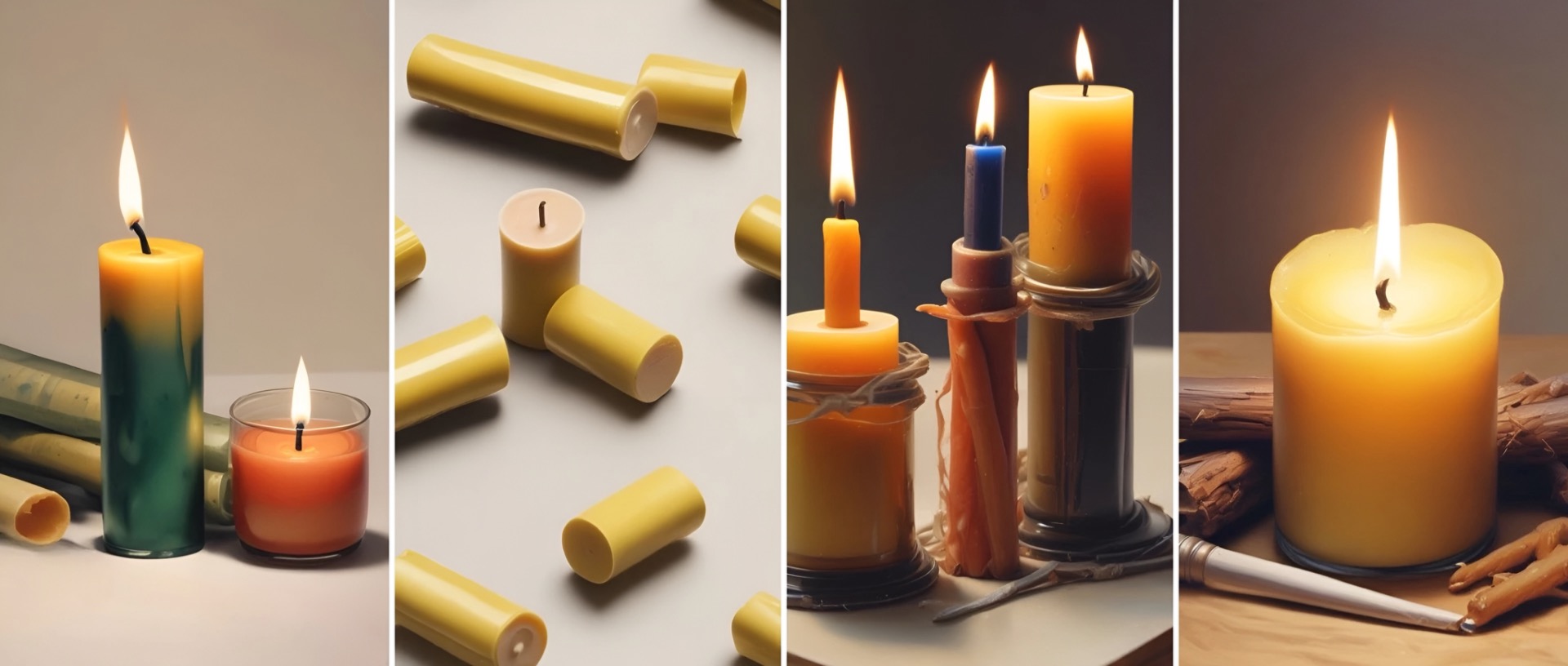Beewax: Benefits, Uses & Candle Making Guide
Beeswax is a natural product secreted by the wax glands of worker bees. Bees begin producing wax after about 10 days of life, with production peaking up to the 18th day.
It is composed of around 300 organic substances, including esters, hydrocarbons, alcohols, and vitamin A.
The color ranges from white, yellow, golden to brown, depending on the flowers the bees use and the collection conditions. It is insoluble in water or cold alcohol, but soluble in warm alcohol, ether, and other solvents.
Benefits and Uses
In Nature
Honeycomb construction: Bees use wax to build the hexagonal cells of the honeycombs, which serve multiple important purposes. These cells provide a secure storage space for honey, the bees' main food source, especially crucial during winter months.
Additionally, the honeycomb cells act as nurseries where bee larvae develop safely. The precise hexagonal shape maximizes space efficiency and structural strength, showcasing nature's engineering excellence.
Bees continuously produce and repair wax to maintain the integrity of the hive framework.
Skin Care and Cosmetics
Moisturizing and protection: Beeswax creates a natural protective seal on the skin's surface, locking in moisture and preventing dryness, which is especially beneficial in harsh weather conditions. Its ability to shield the skin from environmental pollutants and irritants helps soothe conditions such as eczema, psoriasis, and dermatitis.
The anti-inflammatory properties reduce redness and swelling, while antiseptic qualities help prevent infection, making it useful for treating acne and minor skin wounds.

Cosmetic ingredient:
Widely used in skincare products like creams, balms, soaps, and face masks, beeswax acts as an emollient that softens and smooths the skin. It supports the skin's natural barrier, protecting against water loss and promoting hydration.
Beeswax also stimulates cell regeneration, helping to diminish fine lines and wrinkles and giving the skin a youthful glow. Its gentle nature makes it suitable for sensitive skin types, and its natural origin appeals to those seeking eco-friendly cosmetic options.
3. Therapy and Medical Applications
Anti-inflammatory and antiseptic:
Beeswax is used in the treatment of minor wounds, burns, and scratches due to its anti-inflammatory and antibacterial properties. It helps prevent infections and promotes faster healing. Additionally, beeswax has been found effective in managing osteoarthritis and other inflammatory conditions by reducing inflammation and discomfort.
Cholesterol reduction:
Preliminary evidence suggests that beeswax may help lower cholesterol levels, contributing to improved cardiovascular health. While research is ongoing, this natural product shows promise as a complementary approach to managing cholesterol.
4. Beeswax candles are made from the wax secreted by bees, a natural and eco-friendly material. They stand out due to the following features:
Clean burning: They do not emit smoke or toxic substances, making them ideal for indoor use.
This clean burn ensures that the air quality inside your home remains healthy and free from harmful pollutants.
Natural aroma: These candles have a subtle honey scent that creates a relaxing atmosphere.
Unlike synthetic fragrances, this natural aroma gently calms the mind and elevates the mood, making beeswax candles perfect for unwinding or creating a peaceful ambiance.
Durability: Beeswax candles burn slower than paraffin candles, providing a longer-lasting lighting experience.
Their higher melting point and dense composition mean you enjoy extended burn time and better value for your purchase.
Eco-friendly: Beeswax candles are biodegradable and support sustainable beekeeping.
By choosing them, you contribute to the health of bee populations and the environment while avoiding synthetic materials that harm the planet.
Health and Environmental Benefits of Beeswax Candles
- Air purification:
Beeswax candles release negative ions that neutralize airborne pollutants such as dust, pollen, and other allergens. This natural purification helps improve indoor air quality and creates a healthier home environment.
- Reduction of allergies and respiratory symptoms:
Because they burn cleanly without producing smoke, beeswax candles are highly recommended for people with allergies, asthma, or respiratory sensitivities. Their clean combustion helps reduce irritation and promotes easier breathing.
- Antibacterial properties:
Beeswax candles can reduce the number of bacteria in the air, contributing to a cleaner and safer living space.
- Calming and relaxing effects:
The gentle, natural light and subtle honey aroma create a soothing atmosphere that is ideal for meditation, yoga, or simply unwinding after a busy day.

- Improved sleep:
Using beeswax candles before bedtime may help promote deeper, more restful sleep by fostering a peaceful environment.
- Sustainability:
Beeswax candles are an eco-friendly choice because they contain no paraffin or synthetic substances and support sustainable beekeeping practices. Using beeswax products helps protect bee populations and reduces environmental impact.
5. Food Industry
- Food preservation: Beeswax is used to coat cheeses or fruits to keep them fresh for longer periods. Thanks to its non-toxic nature, it serves as a natural preservative agent. By forming a protective barrier, beeswax slows down moisture loss and protects food from contaminants, thus extending shelf life in an environmentally friendly way.

6. Surface Protection
- Sealing and polishing: Beeswax is used for treating wood and other materials exposed to moisture, providing them with protection against damage. When applied, beeswax penetrates the surface, creating a natural barrier that repels water and prevents drying, cracking, and warping. This helps to extend the life of wooden furniture, floors, and decorative items.

Beeswax also enhances the appearance of surfaces by giving them a smooth, lustrous finish without altering their natural color. Unlike synthetic treatments, beeswax is non-toxic and safe, making it an excellent choice for protecting items that come in contact with food or skin.
Regular application of beeswax polish not only nourishes and maintains the wood but also protects it from environmental factors such as dust and sunlight. Its water-repellent properties cause liquids to bead up on the surface, providing effective resistance against spills and stains.

Specific Uses of Different Types of Wax
Cosmetic and pharmaceutical industry (70% of global trade):
- Products including moisturizing creams, lip balms, medicinal ointments, and lotions benefit from the emollient and anti-inflammatory properties of purified or white beeswax.
Candle manufacturing (20% of global trade):
Unprocessed or purified beeswax is used for premium candles that burn cleanly and emit a pleasant natural aroma.
Industrial and artistic applications (10% of global trade):
Wax is used for sculpture (cire-perdue technique), polishing wood and leather, and as a waterproofing material.
Food industry:
Purified beeswax is utilized as a protective coating for cheeses or fruits to extend their shelf life.
Types of Beeswax
Beeswax is available in several forms and types, each with specific characteristics and uses. These types are classified based on their level of processing, color, and applications.

Main Types of Beeswax
1. Raw (Unprocessed) Beeswax
- Description:
Raw beeswax is extracted directly from the honeycombs and may contain impurities such as honey residues, pollen, or other particles.
- Uses:
It is used for producing processed beeswax or in traditional applications such as attracting swarms into new hives.
- Characteristics: Its color varies from light yellow to dark brown depending on the source.
2. Purified (Refined) Beeswax
- Description: Raw beeswax is melted and filtered to remove impurities. It is available in forms like blocks, pellets, or sheets.
- Uses: Mainly used in the cosmetics, pharmaceutical, and food industries due to its high purity. Ideal for creams, balms, premium candles, and medicinal products.
- Characteristics: Typically has a uniform color, ranging from off-white to light yellow.
3. White Beeswax (Albita)
- Description: Obtained by chemically or naturally bleaching raw or refined beeswax.
- Uses: Used in cosmetic and pharmaceutical products that require a wax without strong color, such as lotions or medicinal ointments.
- Characteristics: Has a creamy white color and a fine texture.
4. Naturally Colored Beeswax
- Description: Beeswax that retains its natural golden-yellow hue without harsh chemical processing.
- Uses: Preferred for decorative candles, artisanal products, and natural cosmetics due to its authentic appearance.
5. Foundation Wax Sheets
- Description: Beeswax molded into sheets with hexagonal cell patterns for use in modern beekeeping.
- Uses: Helps bees build comb faster, saving their energy for honey production; also used in making rolled candles.
Beeswax candles can be made using two main methods: pouring and rolling.
1. Pouring Method
This method involves melting beeswax and pouring it into molds or containers.
The wax is heated to a moderate temperature (70-75°C) using a double boiler (bain-marie) to avoid overheating.
A cotton wick is fixed in the center of the container, and the melted wax is poured slowly to prevent air bubbles from forming.
After pouring, the candles are left to solidify for the necessary amount of time, depending on the candle's size and design.
2. Rolling Method
This method is simpler and does not require melting the wax.
You use thin sheets of beeswax, which are wrapped around a cotton wick.
The process is similar to rolling a mat and is ideal for those who want to make candles quickly and without special equipment.
Both methods produce high-quality results, and the choice depends on personal preferences and available resources.
How to Clean and Filter Beeswax
Cleaning and filtering beeswax is a simple process that can be done at home. Here are the main steps:
Melting the Wax: Place the beeswax in a pot with water and heat it gently over low heat. It is important not to overheat the wax, as it can degrade or even burn.
Sterilizing and Separating: Boiling helps sterilize the beeswax and separates it from impurities. Since beeswax is lighter than water and impurities, it will rise to the surface.
Cooling: After boiling, allow the wax to cool without stirring. This process can take between 16 and 20 hours, depending on the amount of wax being filtered.
Removing Impurities: Once cooled, the wax solidifies and separates from the sides of the pot. The layer of impurities remains at the bottom of the pot. If necessary, scrape off the impurities and repeat the melting and filtering process.
Filtering: For a more thorough cleaning, the melted wax can be passed through cheesecloth or a fine strainer to remove any remaining particles.
This process ensures you obtain clean, sterilized wax suitable for various uses such as making cosmetic creams, candles, or wood finishes.
How to Melt Beeswax at Home
Melting in a Water Bath (Bain-Marie):
- Prepare your vessels by filling a large pot halfway with water and placing it on the stove to heat.
- Put the beeswax into a smaller heat-resistant container made of stainless steel or heat-safe glass.
- Place the container with the wax inside the pot of water and heat over medium heat.
- The wax will melt gradually. Make sure the temperature does not exceed 80°C to avoid decomposition.
- Use a thermometer to monitor the temperature.
- After melting, allow the wax to cool to 65-75°C before adding any fragrance or colorants.
Melting in a Microwave:
- Prepare a microwave-safe container (ceramic or glass) and pour the beeswax into it.
- Heat the container in the microwave in 1-minute intervals, checking the temperature after each interval until it reaches 80°C.
- Continue heating in 2-minute bursts until the wax is fully melted.
Direct Melting in Water
- Prepare the raw material: Crush the beeswax and place it in an aluminum pot, then add clean water (preferably distilled or spring water).
- Heat: Warm gently over low heat for 30 minutes, then let it settle for another 10 minutes. The clean beeswax will float to the surface of the water.
Melting in an Electric Oven
- Prepare the material: Place the beeswax on a stainless steel mesh inside an electric oven.
- Heat: Set the temperature to around 70°C and allow the wax to melt slowly. This method is ideal for small quantities.
Important Considerations
Ideal temperature: Natural beeswax melts between 69-72°C, depending on impurities and the method of extraction.
Avoiding decomposition: Do not heat beeswax above 100°C to prevent foaming or breakdown of its components.
Cleaning: Ensure the wax is clean before melting to obtain a high-quality finished product.
These methods are effective for melting beeswax under home conditions, ensuring you obtain a high-quality material suitable for various uses.
How to Make Beeswax Sheets
If you want to create beeswax sheets with a honeycomb shape, you can use a mold or special form that reproduces the characteristic hexagonal pattern of honeycombs. Here's how you can proceed:
Obtaining a honeycomb mold: Purchase or make a mold from silicone, plastic, or metal that has the hexagonal honeycomb pattern. These are available in specialized beekeeping or craft stores.
Melting the wax: Melt the beeswax in a heat-resistant container at around 80°C. Make sure it is completely melted and homogeneous.
Pouring into the mold: Pour the melted wax into the honeycomb-patterned mold. You can use a spoon, ladle, or a narrow-mouthed container to better control the amount of wax poured.
Leveling: Ensure the wax is evenly distributed in the mold. If necessary, use a spatula or tool to even out the surface.
Cooling and solidifying: Let the wax cool and fully solidify in the mold. This process can take a few minutes, depending on the thickness of the sheets and type of mold.
Removing the sheets: After the wax has solidified, carefully remove the sheets from the mold to avoid damaging the hexagonal pattern.
Storage: Store the wax sheets in a dry, cool place, protected from dust and insects, until ready for use.
Using a mold with a honeycomb pattern, you will obtain sheets of beeswax that perfectly reproduce the hexagonal structure of natural honeycombs, ideal for various applications including beekeeping and artisanal projects.
Conclusion
Beeswax is an extremely versatile product used both in nature and across various industries such as cosmetics, alternative medicine, food, and aromatherapy. Its moisturizing, regenerative, and protective properties make it indispensable for health and wellbeing.
Beeswax candles, in particular, offer multiple benefits, ranging from purifying the air and reducing allergies to creating a relaxing atmosphere.
The wide variety of beeswax types allows its use in a broad range of applications, each tailored to specific needs, making beeswax a valuable natural resource that supports human health and environmental protection.

